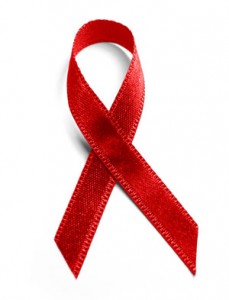A Prologue
Between July 22 – 27, researchers, policymakers, activists and people living with HIV/AIDS will convene at the 2012 International AIDS Conference in Washington D.C.
This is the first time in 22 years that the world’s largest HIV/AIDS conference will be held in the US. Although the conference hosted its 1985 inaugural meeting in the U.S. and two additional meetings in 1987 and 1990, a controversial decision to ban travelers with HIV/AIDS from entering the US sparked enough outrage that the conference had to be held outside of its first home for over two decades. The decision to return stateside only came after President Barack Obama’s 2009 pledge to remove travel restrictions on people living with HIV/AIDS, which came into effect early 2010.
The theme of this year’s conference is “Turning the Tide’s Together,” a recognition that the HIV/AIDS epidemic has reached a defining moment where new medical advancements could lead to large-scale prevention and treatment. The theme also reflects the cross-sector response needed to effectively stem the spread of the disease and the misconceptions associated with it. Governments, the private sector, NGOs and private individuals all have a role in reversing the HIV/AIDS epidemic.
As the conference date approaches, VNHELP will bring you a two-part post on HIV/AIDS in Vietnam. The first will be an overview of the current state of HIV/AIDS in Vietnam and what’s being done about it. The second part will take a closer look at the history of the disease in Vietnam.
What It’s Like Now
According to UNAIDS, the projected number of people living with HIV/AIDS in Vietnam for 2012 is 280,000. Of these 280,000 cases, 5670 are expected to be infections of children ages 0 – 15. This puts the prevalence of HIV/AIDS for the 15 – 49 age group at .47% of the population, which may not seem like a lot, but still translates to hundreds of thousands of lives.
Although Vietnam has recently made much progress in treating the disease since it was first detected in the country in 1990, HIV/AIDS prevalence continues to expand. In 2000, 138 people per every 100,000 were HIV-positive or had developed AIDS. In 2010, that number rose 44% to 316 people per every 100,000. And while HIV/AIDS claimed the lives of 5.7 people per every 100,000 deaths in Vietnam in 2000, by 2009, lives lost to HIV/AIDS accounted for 16 of every 100,000 deaths.
Furthermore, vulnerability to HIV/AIDS has increased. Roughly 79% of all HIV/AIDS cases are in the 20 – 29 age group, and 85.2% of all cases are males. Contaminated drug injections are a prevailing cause of the disease, as is unsafe sex with high-risk sexual partners and sex workers. Heterosexual transmission is becoming more common.
What’s Being Done
Vietnam’s initial response to HIV/AIDS was achingly slow, but it has improved in the past decade. Between 1990 – 2000, little to no treatment was available to those infected by the virus. It was not until 2000 that Vietnam developed the Viet Nam Administration for HIV/AIDS Control (VAAC), and it took another four years before the approval of the “National Strategy on HIV/AIDS prevention and control in Vietnam till 2010 with a vision to 2020.”
The National Strategy calls for the application of the “Three Ones” principles, which are:
One agreed HIV/AIDS Action Framework that provides the basis for coordinating the work of all members.
One National AIDS Coordinating Authority, with a broad-based multisectoral mandate.
One agreed country-level Monitoring and Evaluation System.
One of the greatest challenges facing Vietnam’s handling of HIV/AIDS now is the depleting funds for treatment, research and awareness campaigns. The majority of funds come from external donors, including the President’s Emergency Plan For AIDS Relief (PEPFAR, a fund created by former American president George W. Bush); the Global Fund to Fight AIDS, Tuberculosis and Malaria; the Asian Development Bank and other governments. But Vietnam cannot rely on foreign funds in perpetuity, especially when domestic issues in other countries could pull the plug to Vietnam.
To help Vietnam stay current with HIV/AIDS-related issues, efforts are being made in-country by non-state actors, such as the recently formed nonprofit Vietnam Clinical HIV/AIDS Society (VCHAS). With seed money from the Centers for Disease Control through the Harvard Medical School AIDS Initiative (part of PEPFAR), VCHAS aims to help physicians in Vietnam network and share knowledge, improve capacity and training of different levels of medical professionals, and collaborate with other countries and international organizations.
Speaking to Voice of America, Dr. Nguyen Van Kinh, president of VCHAS, said, “All activities for treatment in Vietnam get support from the projects supported by the outside. But after some period, the projects finish. So Vietnamese must stand on their own.”
Stay tuned for the second part of our post on HIV/AIDS in Vietnam, coming soon.




